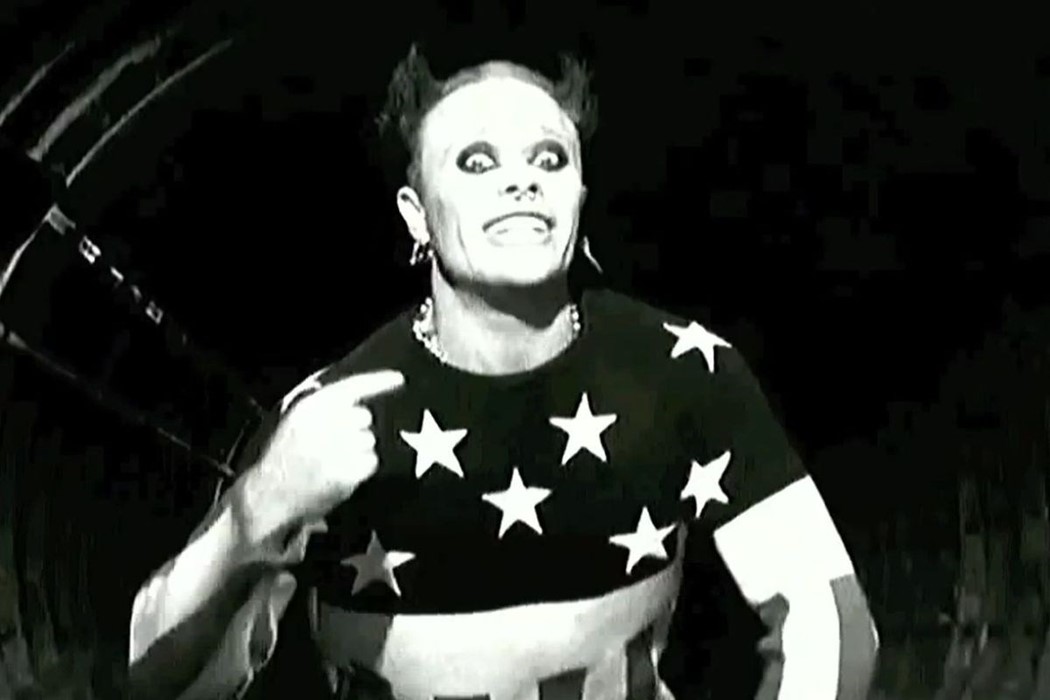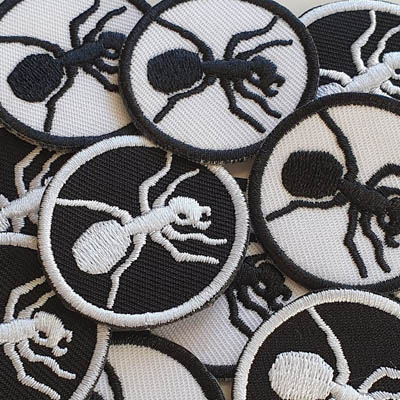Articles
The Prodigy related articles from magazines.
Dazed
Remembering Keith Flint, the rave anarchist and unlikely pop culture icon

The Prodigy member was an unlikely pop culture icon of the 1990s and beyond
“When, and if, I get to 65, I’d like to say that I did everything – the lot.”
Keith Flint was nothing if not ambitious. The vocalist and dancer with Essex electronic trailblazers The Prodigy, who tragically died by suicide yesterday aged 49, spent a generation as someone whose calling wasn’t simply music – it was unflinching punk expression, one that relentlessly pushed to find a way out of normality.
The images that will continue to command our collective memory of Flint – those of a fluorescent-haired bête noire wreaking havoc in Walter Stern’s oppressive videos for The Prodigy’s chart-topping singles of 1996, “Firestarter” and “Breathe” – capture the incendiary spirit that saw the group evolve from underground rave gurus to techno-punk superstars. But potent though they are, they only skim the surface of Flint’s life and arrival as a musical icon who made incredibly tenacious art.
Born in Redbridge, east London, in 1969, Flint’s upbringing was marked by episodes of instability. His parents split when he was young; at 15, he was expelled from Boswells School in Chelmsford, before trying his hand at various jobs. No path – neither as a market-stall trader in Israel, nor the work he could get as a butcher or a roofer – seemed to click. Early on, restlessness and a desire to break beyond the confines of the everyday doubled up as a mission statement. “I hated being at home so much that I’d go in for dinner, which was statutory,” he recalled back in 2005. “And if it wasn’t ready for three minutes, I’d go out again and come back three minutes later.”
By 1989, the long-haired Flint – then affectionately known by friends as ‘Sheepdog’ – was an instantly recognisable dancer at the Barn, the Essex nightclub that played a sizeable role in the advent of the Second Summer of Love in the late 1980s. It was there where Flint first crossed paths with Liam Howlett, an ambitious 18-year-old producer who, come early 1990, would form The Prodigy. Propelled by blissed-out anthems including “Charly” and “Everybody in the Place”, and with dancer Flint in tow, they began packing out venues, big and small, across the country. A permanent fixture up front, Keith Flint swiftly became the talisman of a group that was steering rave culture towards the mainstream.
By leveraging the force of nature that was Flint, an unhinged Johnny Rotten-like figure for the post-jilted generation, all while embracing sample-heavy rock production, The Prodigy pulled off one of the most inspired acts of subversion in modern pop music
Though he had no hand in Howlett’s masterful mesh of breakbeat, techno and jungle on the group’s debut album, Experience, or its seminal follow-up, Music For The Jilted Generation, Flint’s fired-up presence proved indispensable from those early performances. For him, the quality of the live experience – what constituted experiencing rave culture on an elemental, on-the-ground level – was how he measured The Prodigy’s success over the years. “What we always wanted to achieve over and above selling records was having a great show,” he reflected in 2014. “That is to do with the rave aspect of having a great PA, at a party, and actually bringing something to it, sonically, visually and with the buzz. That is totally what it’s always been about.”
By the mid-1990s, Flint, Howlett and vocalist Keith Palmer (aka Maxim Reality) cemented the core line-up of The Prodigy. But with the release of their first number one, “Firestarter”, in March 1996, Flint was thrust into the public sphere as the face, and de facto frontman, of the group. By leveraging the force of nature that was Flint, an unhinged Johnny Rotten-like figure for the post-jilted generation, all while embracing sample-heavy rock production, The Prodigy pulled off one of the most inspired acts of subversion in modern pop music. When various TV stations refused to play Stern’s video pre-watershed, the feat, though not meticulously calculated, was underscored.
As The Prodigy went stratospheric thanks to their third album, The Fat of the Land, and a historic headline slot at Glastonbury (a first for a dance act) in 1997, Flint was driven by one guiding principle: that everyone – the ravers, the punks, and every subculture in between – could cut loose to The Prodigy. “You get crowds full of people,” he said in 1997. “Hardcore punks, street kids, skaters, surfers, even people who are into music and don’t have a particular style – I will target those people and I will make sure they’re as sweaty as the next, shirts ripped open and jumping and doing whatever. It’s a challenge. You get people who look slightly different to the run-of-the-mill Prodigy fan and you target them.”
With his untamed vocals coming to define latter-day singles including “Nasty” and “Omen”, Flint would later expand to songwriting duties on 2015’s The Day Is My Enemy. But despite anchoring ire and indignation as creative energy for the best part of three decades, most recently on last year’s No Tourists, his passing has dredged up countless tales of a gentle soul, who enjoyed gardening and animals every bit as much as performing. As The Prodigy continued to push forward and break new ground, he steadily emerged as the “true pioneer, innovator and legend” that his bandmates have paid tribute to. He may not have reached 65, but he made every moment count.
Samaritans can be contacted on 116 123 (UK) and 116 123 (ROI). The US National Suicide Prevention Hotline is 1-800-273-8255.
Categories
- Articles front page 85
- Australian articles 21
- Austrian articles 3
- Canadian articles 11
- Chinese articles 1
- Czech articles 3
- Danish articles 5
- English articles 269
- Finnish articles 25
- French articles 3
- German articles 22
- Greek articles 2
- Hungarian articles 5
- Icelandic articles 11
- Indian articles 4
- Irish articles 10
- Israil articles 1
- Japanese articles 27
- New Zealand articles 5
- Norwegian articles 11
- Polish articles 4
- Russian articles 17
- Scottish articles 8
- Serbian articles 1
- Singapore articles 1
- South African articles 4
- Spanish articles 8
- Swedish articles 4
- Turkish articles 1
- UAE articles 1
- US articles 78

Trending
31 Dec 2011 Sabotage Times
The Prodigy Interviewed: “No more snorting cheap speed and banging pills up my arse”
06 Sep 2019 Music Business Worldwide
Peermusic UK signs the Prodigy’s Maxim Reality to exclusive global publishing deal
02 Nov 2017 South China Morning Post
Liam Howlett of The Prodigy on ‘fake controversy’, the band’s fired-up frontman Flint and new ‘old’ album ahead of Clockenflap
01 Aug 1992 Mix Mag
Did Charly Kill Rave?
30 Jul 2019 MusicTech magazine
Prodigy engineer/co-producer Neil Mclellan remembers the Jilted Generation sessions
The Prodigy 34 pcs sticker set
Big set of The Prodigy stickers. 17 different designs (2 of each) and total of 30 stickers. Sticker sizes vary from 9 cm to 3,5 cm. Order here >
